You nurture your tomato plants until you have beautiful fruit maturing on the vine.
Upon closer inspection, you discover that something has gone terribly wrong.
Your fruits have a hideous deformity! What is going on?
Fear not – they are not under siege from a pathogen that could ruin your entire crop.
In fact, if the fruit have not split open, they are perfectly safe to eat. However, you certainly can’t sell them or show them off.
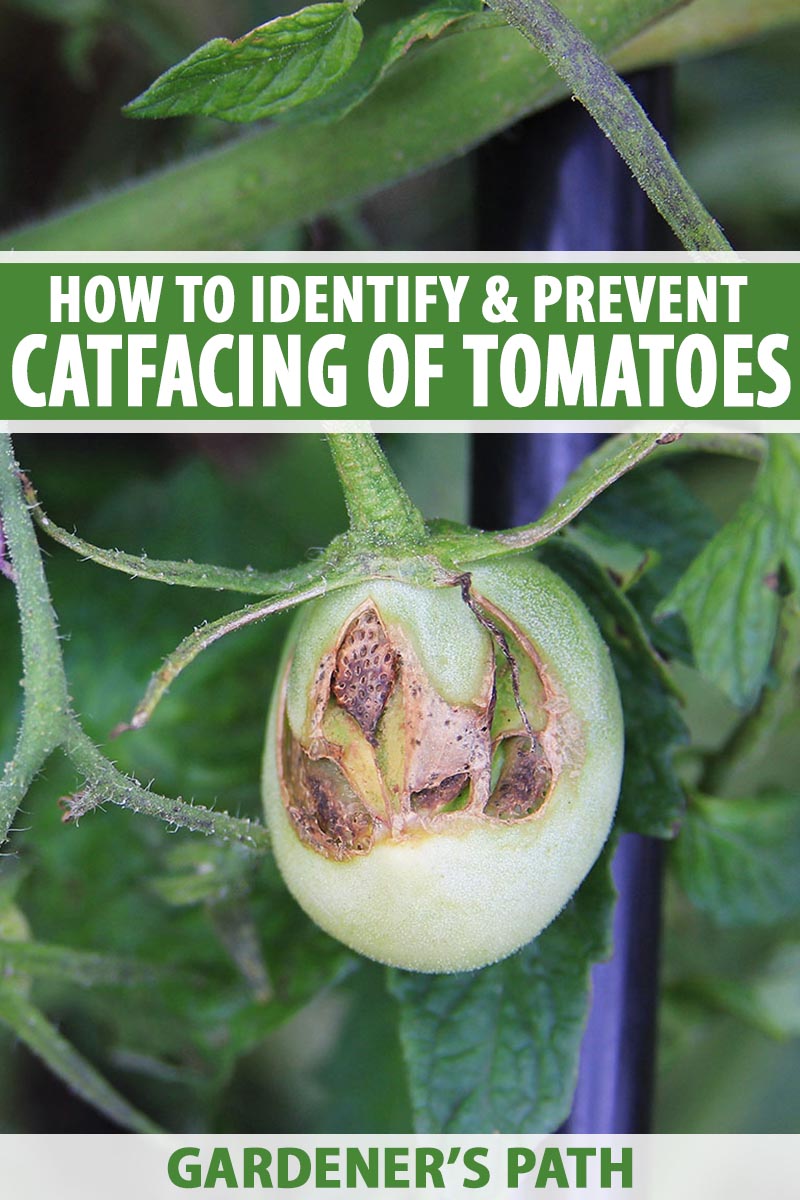
We link to vendors to help you find relevant products. If you buy from one of our links, we may earn a commission.
We will introduce you to the world of tomato disfigurement known as catfacing – a disorder that is not contagious, but can cause significant losses of yield.
Here’s what I will cover:
What You’ll Learn
What Is Catfacing of Tomatoes?
How did this disorder get its name? The answer is simple: because the deformity looks similar, at least at times, to a small cat’s face.
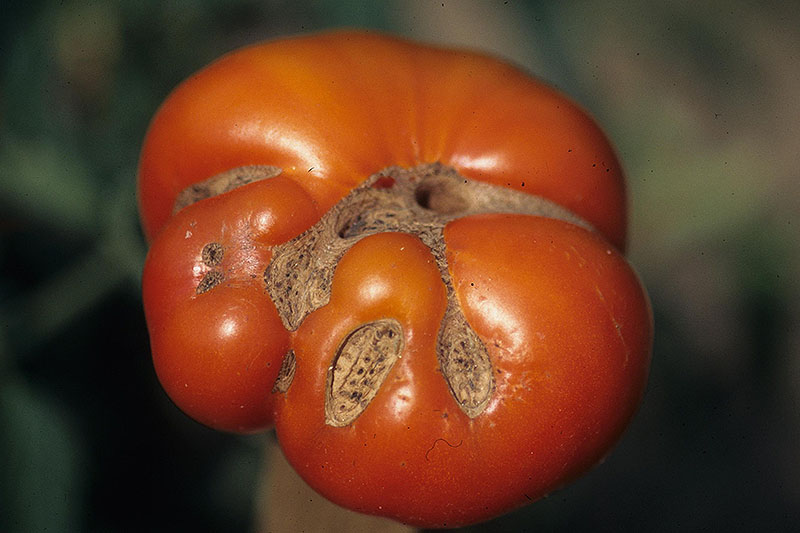
A physiological disorder rather than a disease, catfacing is not caused by an insect or pathogen – it is caused by cultural problems in the garden.
The result is fruit that is deformed on the blossom end, or sometimes on the side.
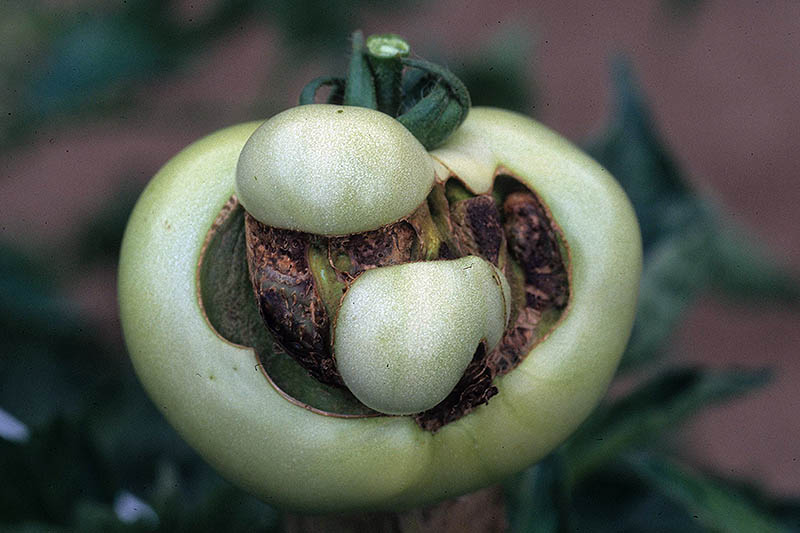
Typically, you will see a large indentation that looks like a scar. It can crack open and expose the locules – the cavities that contain the seeds.
The fruit can also become distorted and misshapen.
However, even if the blossom scar is just enlarged and the fruit has not split open, the tomato is still considered to have catface.
What Causes This Deformity?
The exact cause is unknown, but many cultural conditions have been associated with catfacing.
Abnormal Temperatures
Cool weather has been associated with the development of this disorder. Temperatures that dip below 60°F three weeks before the plant blooms may interfere with normal development of the flower bud, which can manifest in catfacing.
Abnormally hot weather can also induce this condition.
Even worse is when there are wide fluctuations between temperatures at night and during the day.
This can cause the fruit to alternate between slow growth and quick growth – a situation that is ripe for the development of catfacing.
Disturbance to the Flowers
Physical damage to the flowers, before or after pollination can cause catfacing.
A common source of injury to the flowers is an attack by little insects called thrips. Leaf curl is a major symptom of thrip infestation.
You definitely want to treat your plants if they have an infestation of thrips.
These insects can transmit tomato spotted wilt virus, which could destroy all of your tomato, pepper, and other nightshade crops.
You can banish thrips by spraying your plants with an organic soap-based spray, according to package instructions, such as Bonide Insecticidal Soap available from Arbico Organics.
Pruning and High Nitrogen Levels
According to experts at UMass Extension, excessive pruning or high concentrations of nitrogen in the soil may also cause catfacing.
Dr Gerald Brust from the University of Maryland Extension suggests that the reduction of auxins – plant hormones that promote cell elongation – as a result of pruning may increase susceptibility to this disorder.
Herbicide Exposure
In commercial operations, tomatoes that have been exposed to the herbicide 2,4-D can develop this disorder. The chemical mimics plant hormones, so it can disrupt the normal development of the fruit.
Fortunately for the home gardener, edible crop exposure to chemical herbicides is unlikely.
Tomatoes That are Affected
Very large tomatoes, flat-bottomed cultivars in particular, appear to be more prone to develop this condition than smaller varieties.
Heirloom varieties are frequently vulnerable, and you may have noticed the telltale signs of this physiological disorder on fruit at the farmers market. Fortunately, as long as damage is not severe, it does not render the fruit inedible.
How to Prevent Catfacing
While you may not be able to prevent the development of catface entirely, you can take steps to minimize its likelihood.
Grow Resistant or Tolerant Varieties
Growing tolerant varieties is highly recommended as the best way to avoid catfacing.
There are several varieties that are less likely to develop this disorder, including ‘Countil,’ ‘Duke,’ ‘Floradade,’ ‘Monte Carlo,’ and ‘Walter.’
You can find seeds for ‘Floradade’ in a variety of packet sizes at Eden Brothers.
Avoid Low Temperatures
If you grow your plants in a greenhouse for any part of their life cycle, avoid low or fluctuating temperatures.
And don’t plant your transplants in the ground too early, so they will be less likely to be exposed to cold weather.
If a cold snap is in the forecast, protect your plants with loosely wrapped burlap or a few layers of towels.
Do Not Prune or Fertilize Excessively
While it can be tempting to fertilize your young plants with nitrogen, do so in moderation. Conduct a soil test to check the nutrient levels of your soil and find out if there is a deficiency.
Also, avoid pruning aggressively, particularly during bloom time.
Find tips on proper pruning techniques here.
Maintain Adequate Levels of Moisture
Tomato plants require regular, deep watering.
Mulching well is one way to keep more moisture in the soil and reduce the chances that your fruit will develop catface.
Another is to water thoroughly with a soaker hose at the soil level.
Cracking Can Increase Vulnerability to Pathogens
Some split tomatoes are safe to eat, but splitting can cause a potential pathway for fungi and bacteria to enter the fruit.
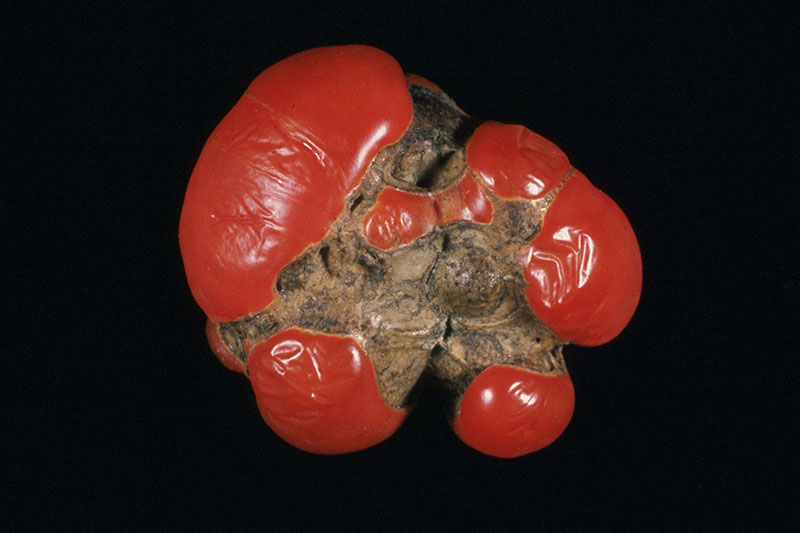
Black mold rot is a particular problem. This can be caused by several different types of fungi, particularly Alternaria alternata.
Harvesting as soon as they are ripe can minimize the chances of contracting this infection.
Experts advise against eating any fruit with catfacing that has exposed tissue. More superficial damage to the skin can be removed before enjoying the fruit.
Fungi can produce very dangerous toxins, and you do not want to take any chances by eating fruit that could contain them.
Many Factors Cause Catface, But There Is Hope
A who’s who of environmental factors can cause catface. These include low or fluctuating temperatures, excessive pruning and fertilization with nitrogen, flower damage from thrips, and herbicide drift.
While many of these are out of your control, you can take steps to minimize the chances of this disorder occurring.
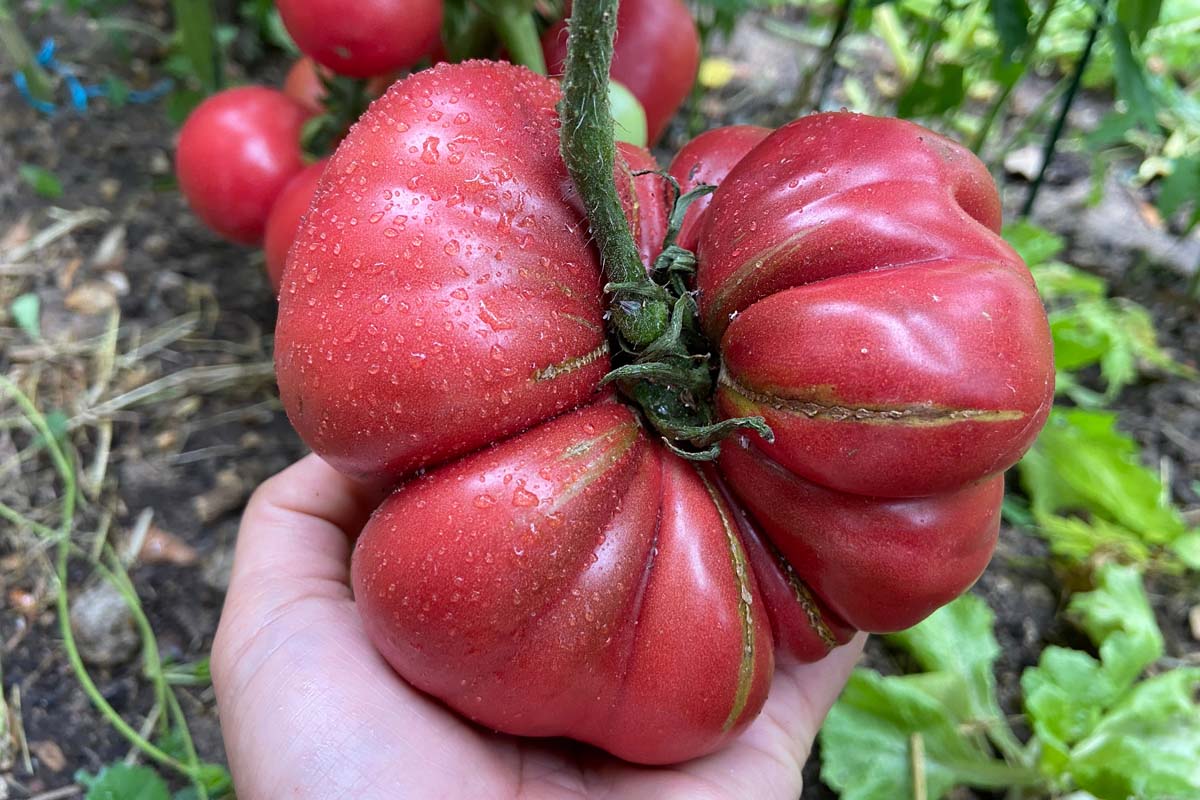
Planting tolerant or resistant varieties is your main line of defense. If your crop suffered this year, try a resistant cultivar next season. Wait to plant your transplants until soil temperatures are above 55°F.
Once plants are in the ground, be sure to water regularly and thoroughly, and mulch around plants to retain moisture.
Have you had a problem with catface on your crops? Let us know in the comments below!
And to learn more about growing tomatoes in your garden, check out these guides next:
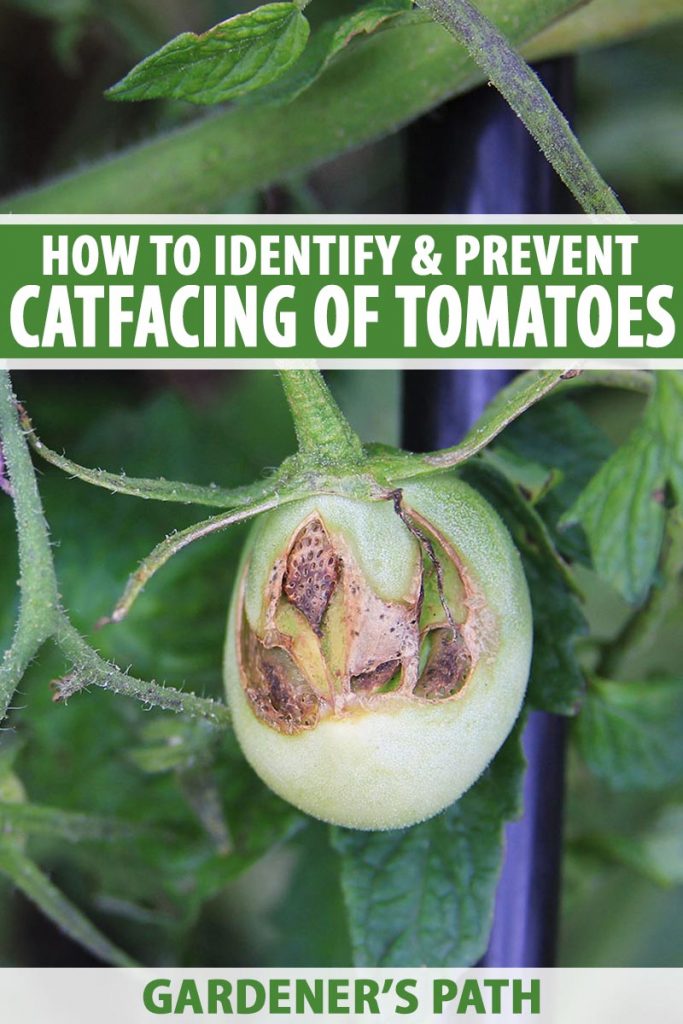



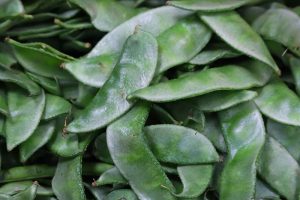

I grew 3 Beefmaster tomatoe plants and 26 other tomato plants. All three Beefmasters are catfaced. The plants have huge tomatoes. One picture is of another tomato plant and a catfaced to show sheer size of the tomato. I do prune all of my tomatoes high so I don’t get blight. This was the first year we covered with straw, so maybe in the future I won’t need to prune so high.
First year this has happened to my tomatoes. They definitely look funky. But taste great. Picked the tomatoes that have started to turn red and will ripen on the counter as something is eating my tomatoes before they fully ripen. My smaller tomatoes have had no problems.
Hi Amanda, I’ve attached your pictures here. Catfacing does tend to be more of a problem in larger heirloom tomatoes. But as you say, they still taste great!
Hi there we have built a greenhouse planted heirloom tomatoes
all going well but one plant is growing one large tomato. It’s deformed and has what looks Ike a stem connection growing on the opposite real stem connection to the plant? Looks like two or three growing in the same tomato. We’ve called it Frankenstein
what have I done wrong to cause this?
Hi Michelle, that certainly sounds weird! Can you take a photo of it so we can take a look? Thanks!
My tomatoes are large, but most of them have catfacing on the bottoms of the fruit. In reviewing the causes, I think I’m probably guilty of overfertilizing.
Sorry to hear about your tomatoes John! Those definitely have very clear “cat faces,” the one at the bottom even looks like a cat.